 W
WAlbert VII was the ruling Archduke of Austria for a few months in 1619 and, jointly with his wife, Isabella Clara Eugenia, sovereign of the Habsburg Netherlands between 1598 and 1621. Prior to this, he had been a cardinal, archbishop of Toledo, viceroy of Portugal and Governor General of the Habsburg Netherlands. He succeeded his brother Matthias as reigning archduke of Lower and Upper Austria, but abdicated in favor of Ferdinand II the same year, making it the shortest reign in Austrian history.
 W
WAnna de' Medici was a daughter of Cosimo II de' Medici, Grand Duke of Tuscany and his wife Maria Maddalena of Austria. A patron of the arts, she married Ferdinand Charles, Archduke of Further Austria in 1646. They were the parents of Claudia Felicitas of Austria, Holy Roman Empress.
 W
WAnna of Tyrol, was by birth Archduchess of Austria and member of the Tyrolean branch of the House of Habsburg and by marriage Holy Roman Empress, German Queen, Queen of Bohemia and Queen of Hungary.
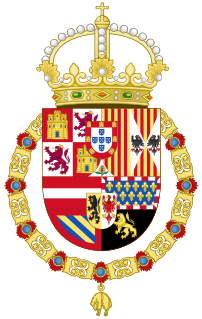 W
WBalthasar Charles, Prince of Asturias, Prince of Girona, Duke of Montblanc, Count of Cervera, and Lord of Balaguer, Prince of Viana was heir apparent to all the kingdoms, states and dominions of the Spanish monarchy until his death.
 W
WThe Infante Carlos of Spain, also known as The Infante Charles of Spain, was an infante of Spain, the second son of King Felipe III of Spain and Margaret of Austria.
 W
WCecilia Renata of Austria was Queen of Poland as the wife of King Władysław IV Vasa.
 W
WCharles II of Spain, also known as El Hechizado or the Bewitched, was the last Habsburg ruler of the Spanish Empire. He is best remembered for his alleged physical disabilities, and the war that followed his death.
 W
WCharles Joseph was an Archduke of Austria and Grand Master of the Teutonic Knights (1662–64). He was also the bishop of Olmütz, and Breslau, Passau.
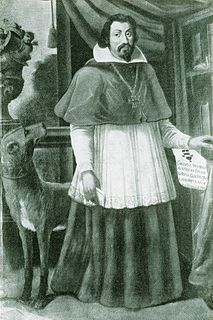 W
WCharles of Austria, nicknamed the Posthumous, a member of the Imperial House of Habsburg, was Prince-Bishop of Wrocław (Breslau) from 1608, Prince-Bishop of Brixen from 1613, and Grand Master of the Teutonic Order from 1618 until his death. In 1621 he also received the Bohemian County of Kladsko as a fief from the hands of his brother, Emperor Ferdinand II.
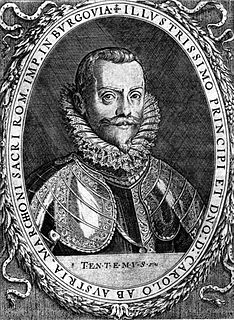 W
WCharles, Margrave of Burgau, also known as Charles of Austria,, was the son of Archduke Ferdinand II of Austria and his first morganatic marriage to Philippine Welser. He was the brother of Andrew of Austria.
 W
WClaudia Felicitas of Austria was by birth an Archduchess of Austria and by marriage Holy Roman Empress, German Queen, Archduchess consort of Austria, Queen consort of Hungary and Bohemia as the second wife of Leopold I.
 W
WConstance of Austria was queen of Poland as the second wife of King Sigismund III Vasa and the mother of King John II Casimir.
 W
WEleonora Gonzaga, was by birth Princess of Mantua, Nevers and Rethel from the Nevers branch of the House of Gonzaga and by marriage Holy Roman Empress, German Queen, Queen consort of Hungary and Bohemia.
 W
WEleanor of Austria, was an Austrian archduchess and a member of the House of Habsburg.
 W
WEleonore Maria Josefa of Austria was Queen of Poland by marriage to king Michał Korybut Wiśniowiecki and Duchess of Lorraine by marriage to Charles V, Duke of Lorraine.
 W
WFor other women of the same name, see Eleanor Gonzaga (disambiguation)
 W
WEleonore Magdalene of Neuburg was a Holy Roman Empress, German Queen, Archduchess of Austria, Queen of Hungary and Bohemia as the third and last wife of Leopold I. Before her marriage and during her widowhood, she led an ascetic and monastic life, translating the Bible from Latin to German and defended the Order of the Discalced Carmelites. Reputed to be one of the most educated and virtuous women of her time, Eleanore took part in the political affairs during the reign of her husband and sons, especially regarding court revenue and foreign relationships. She served as regent for a few months in 1711, period in which she signed the Treaty of Szatmár, which recognized the rights of her descendants to the Hungarian throne.
 W
WFerdinand II, a member of the House of Habsburg, was Holy Roman Emperor (1619–1637), King of Bohemia, and King of Hungary and Croatia (1618–1637). He was the son of Archduke Charles II of Inner Austria, and Maria of Bavaria. His parents were devout Catholics, and in 1590, they sent him to study at the Jesuits' college in Ingolstadt, because they wanted to isolate him from the Lutheran nobles. In July that same year (1590), when Ferdinand was 12 years old, his father died, and he inherited Inner Austria—Styria, Carinthia, Carniola and smaller provinces. His cousin, the childless Rudolf II, Holy Roman Emperor, who was the head of the Habsburg family, appointed regents to administer these lands.
 W
WFerdinand III was from 1621 Archduke of Austria, King of Hungary from 1625, King of Croatia and Bohemia from 1627 and Holy Roman Emperor from 1637 until his death in 1657.
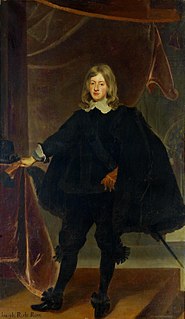 W
WFerdinand IV was made and crowned King of Bohemia in 1646, King of Hungary and Croatia in 1647, and King of the Romans on 31 May 1653. He also served as Duke of Cieszyn.
 W
WFerdinand Charles was the Archduke of Further Austria, including Tyrol, from 1646 to 1662.
 W
WCardinal-Infante Ferdinand was Governor of the Spanish Netherlands, Cardinal of the Holy Catholic Church, Infante of Spain, Infante of Portugal, Archduke of Austria, Archbishop of Toledo (1619–41), and military commander during the Thirty Years' War.
 W
WIsabella Clara Eugenia, sometimes referred to as Clara Isabella Eugenia, was sovereign of the Spanish Netherlands in the Low Countries and the north of modern France with her husband, Archduke Albert VII of Austria. Their reign is considered the Golden Age of the Spanish Netherlands. Isabella was one of the most powerful women in 16th- and 17th-century Europe.
 W
WIsabella Clara of Austria, was a Duchess consort of Mantua, Montferrat, Nevers, Mayenne and Rethel by marriage to Charles II, Duke of Mantua and Montferrat.
 W
WJoseph I was Holy Roman Emperor and ruler of the Austrian Habsburg Monarchy from 1705 until his death in 1711. He was the eldest son of Emperor Leopold I from his third wife, Eleonor Magdalene of Neuburg. Joseph was crowned King of Hungary at the age of nine in 1687 and King in Germany at the age of eleven in 1690. He succeeded to the thrones of Bohemia and the Holy Roman Empire when his father died.
 W
WLeopold I was Holy Roman Emperor, King of Hungary, Croatia, and Bohemia. The second son of Ferdinand III, Holy Roman Emperor, by his first wife, Maria Anna of Spain, Leopold became heir apparent in 1654 by the death of his elder brother Ferdinand IV. Elected in 1658, Leopold ruled the Holy Roman Empire until his death in 1705, becoming the longest-ruling Habsburg emperor.
 W
WLeopold V, Archduke of Further Austria was the son of Archduke Charles II of Inner Austria, and the younger brother of Emperor Ferdinand II, father of Ferdinand Charles, Archduke of Further Austria. He was Bishop of Passau and of Strasbourg, until he resigned to get married, and Archduke of Further Austria including Tirol.
 W
WArchduke Leopold Wilhelm of Austria, younger brother of Emperor Ferdinand III, was an Austrian soldier, administrator and patron of the arts.
 W
WArchduchess Margaret of Austria, was an Austrian archduchess member of the House of Habsburg.
 W
WMargaret of Austria was Queen consort of Spain and Portugal by her marriage to King Philip III.
 W
WMargaret Theresa of Spain was, by marriage to Leopold I, Holy Roman Empress, German Queen, Archduchess of Austria and Queen of Hungary and Bohemia. She was the daughter of King Philip IV of Spain and the elder full-sister of Charles II, the last of the Spanish Habsburgs. She is the central figure in the famous Las Meninas by Diego Velázquez, and the subject of many of his later paintings.
 W
WMaria Anna Josepha of Austria, was a Duchess consort of Jülich-Berg and Electoral Princess of the Palatinate.
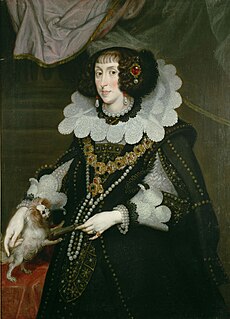 W
WArchduchess Maria Anna of Austria, was a German regent, Electress of Bavaria by marriage to Maximilian I, Elector of Bavaria, and co-regent of the Electorate of Bavaria during the minority of her son Ferdinand Maria, Elector of Bavaria from 1651 to 1654.
 W
WInfanta Maria Anna of Spain was a Holy Roman Empress and Queen of Hungary and Bohemia by marriage to Ferdinand III, Holy Roman Emperor. She acted as regent on several occasions during the absences of her spouse.
 W
WMaria Antonia of Austria was an Electress of Bavaria by marriage to Maximilian II Emanuel, Elector of Bavaria. She was the eldest daughter and only surviving child of Holy Roman Emperor Leopold I and his wife Margaret Theresa of Spain. She was the heir to the Spanish throne after her maternal uncle Charles II of Spain from 1673 until her death.
 W
WMaria Christina of Austria, was a Princess of Transylvania by marriage to Sigismund Báthory, and for a period in 1598 elected sovereign Princess regnant of Transylvania.
 W
WMaria Leopoldine of Austria-Tyrol, was by birth Archduchess of Austria and member of the Tyrolese branch of the House of Habsburg and by marriage the second spouse of her first cousin, Holy Roman Emperor Ferdinand III. As such, she was Empress of the Holy Roman Empire, German Queen and Queen consort of Hungary and Bohemia. She died in childbirth.
 W
WMaria Maddalena of Austria was Grand Duchess of Tuscany from the accession of her husband, Cosimo II, in 1609 until his death in 1621. With him, she had eight children, including a duchess of Parma, a grand duke of Tuscany, and an archduchess of Further Austria. Born in Graz, she was the youngest daughter of Charles II, Archduke of Inner Austria, and his wife Maria Anna of Bavaria. During the minority of her son, Grand Duke Ferdinando, she and her mother-in-law acted as regents from 1621 to 1628. She died on 1 November 1631 in Passau.
 W
WMaria Theresa of Austria was a daughter of Leopold I, Holy Roman Emperor and his third wife Eleonore Magdalene of the Palatinate.
 W
WMaria Theresa of Spain, was by birth Infanta of Spain and Portugal and Archduchess of Austria as member of the Spanish branch of the House of Habsburg and by marriage Queen of France.
 W
WMariana of Austria or Maria Anna was Queen of Spain from 1649 until her husband and uncle, Philip IV, died in 1665. She was then appointed regent for their three-year-old son Charles II, and due to his ill health remained an influential figure until her own death in 1696.
 W
WMarie Louise d'Orléans was Queen consort of Spain from 1679 to 1689 as the first wife of King Charles II of Spain. She was a granddaughter of Louis XIII of France. In her adopted Spain, she was known as María Luisa de Orleans.
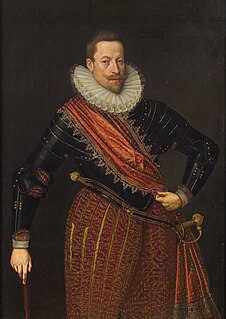 W
WMatthias of Austria, a member of the House of Habsburg was Holy Roman Emperor and Archduke of Austria, king of Hungary and Croatia since 1608 and king of Bohemia since 1611. His personal motto was Concordia lumine maior.
 W
WMaximilian Ernest of Austria, was a German prince member of the House of Habsburg and by birth Archduke of Austria.
 W
WMaximilian III of Austria, briefly known as Maximilian of Poland during his claim for the Throne was the Archduke of Further Austria from 1612 until his death.
 W
WPhilip Prospero, Prince of Asturias was the first son of Philip IV of Spain and Mariana of Austria to survive infancy. Philip IV had no male heir since the death of Balthasar Charles, his son by his first wife, Elisabeth of France, eleven years before, and as Spain's strength continued to ebb the issue of succession had become a matter of fervent and anxious prayer.
 W
WRudolf II was Holy Roman Emperor (1576–1612), King of Hungary and Croatia, King of Bohemia (1575–1608/1611) and Archduke of Austria (1576–1608). He was a member of the House of Habsburg.
 W
WSigismund Francis, Archduke of Further Austria was the ruler of Further Austria including Tyrol from 1662 to 1665.